How To Teach CVC Words + FREE CVC Word List!
This post may contain affiliate links, and I will earn a commission if you purchase through these links. Please read the disclosure policy for more details.
Do you struggle with teaching CVC words to your students? Or are you looking for new and different ways to teach the CVC pattern? In this blog post, you will learn what a CVC word is, how to teach them, plus download my FREE CVC words list to help you plan your activities.
What is a CVC word?
CVC words are words that have the pattern consonant-vowel-consonant, or CVC, like the words cat and mop. The vowel in CVC words makes the short sound because it is a closed syllable.
When a consonant follows a vowel it creates a closed syllable. This means the vowel makes its short sound instead of saying its name (the long sound). Learn more about the closed syllable here.

Why teach CVC words?
Since CVC words are so easy to decode, they are perfect for students learning how to read. Students usually learn letter sounds first, and these are easy to apply with CVC words since they are short and straightforward.
Teaching students how to read CVC words introduces blending and segmenting with letters. These two skills are what they will need as they progress with more complex words and patterns.
By learning to read the CVC pattern, students are now able to read sentences and books on their own and practice these skills. Most early reader books are full of CVC words and high frequency words, so it makes sense to start here.
How to teach CVC words
The major skill in teaching CVC words is getting students to understand that the word always has the same pattern. For example, the word pot has the consonant-vowel-consonant pattern of /p/ /o/ /t/. It’s important to show your students how each letter makes its sound so they are able to blend them together quickly and recognize the pattern.
Teach students about the beginning, middle, and ending sounds. Start with the beginning sound, asking students what the first sound is or what the beginning sound is. Then move to the middle sound. And finally, work on the final sound. Show them visually where the beginning, middle, and end of a word are. Always model first, pointing to the place you are referring to.
After you have taught students to isolate the individual sounds, you can show them how to blend and segment the sounds.
One thing to note is that you don’t want to use the letters m, n, or l as the final sound when segmenting words because they change the vowel sound. This means you can use /m/ at the beginning of a word like mat but not at the end like jam. Say those 2 words aloud and segment them aloud you’ll notice the slight difference in the short a sound.
When introducing the consonant vowel consonant pattern, start off using pictures only to work on CVC words, then move to words and letters that students can manipulate, and finally have students write CVC words. This progression goes from easy to more difficult building on the previous skills.
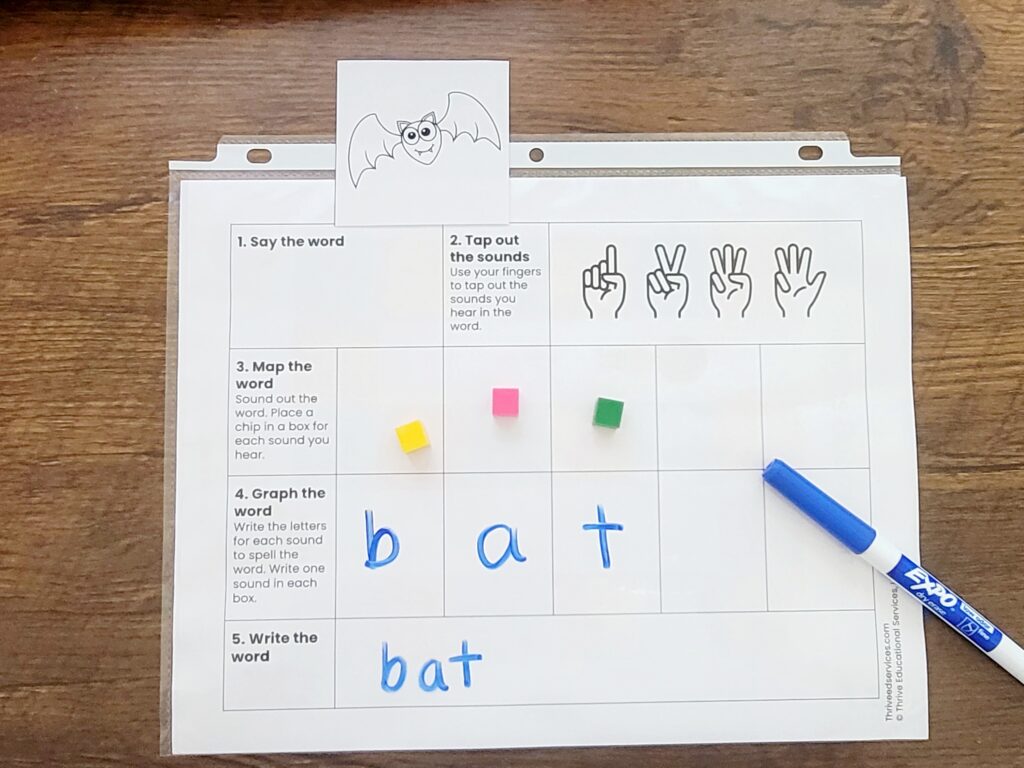
When to teach CVC words
Students need to already know what consonants and vowels are. They need to know the sounds of the letters they are working with. They should be familiar with blending and segmenting orally through previous phonemic awareness practice.
If students have never done oral blending and segmenting then you’ll have to go back and teach that before you teach them how to do it with letters. This is because students need to know how to manipulate individual sounds. This is an auditory skill and it can create confusion trying to teach it along with the visuals of the letters.
You also don’t need to wait until students have learned every single sound before introducing CVC words. You can introduce CVC words as soon as students have learned a few letters that you can blend and segment together.
So for example, if your students have already learned the sounds for a, b, and c, you can introduce the CVC word cab.
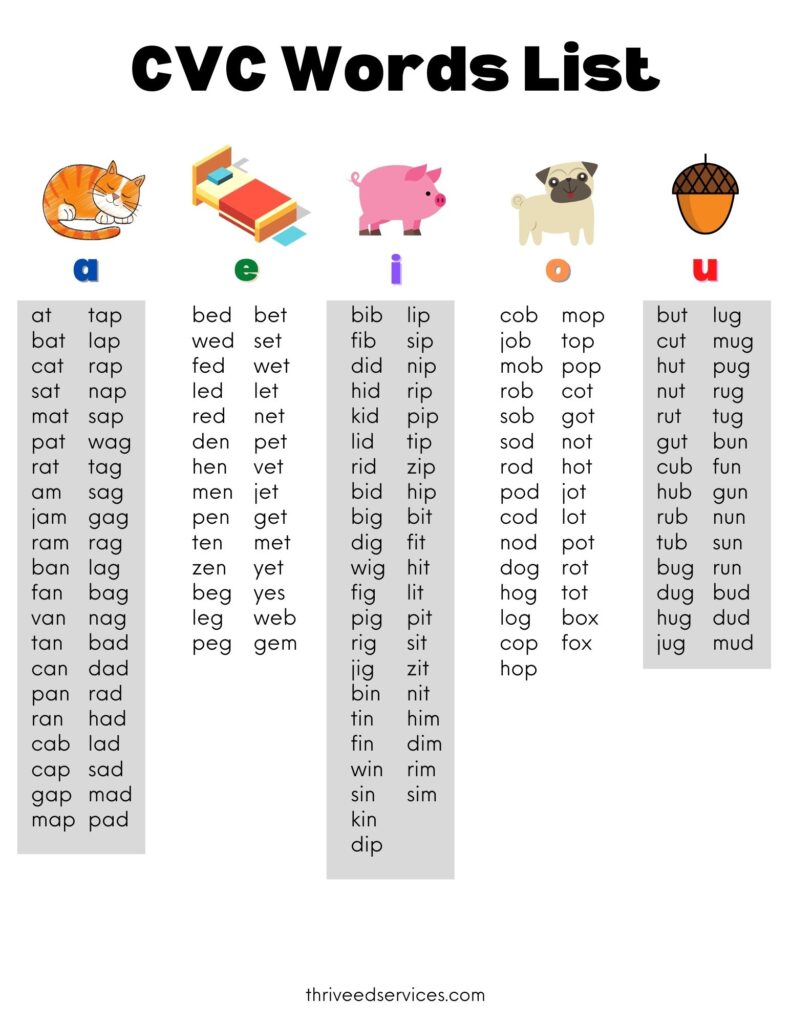
Free printable list of 100+ CVC Words!
If you’re looking for a good list of CVC words then I have you covered. Download my free CVC word list by signing up for my newsletter below.
CVC Word Activities
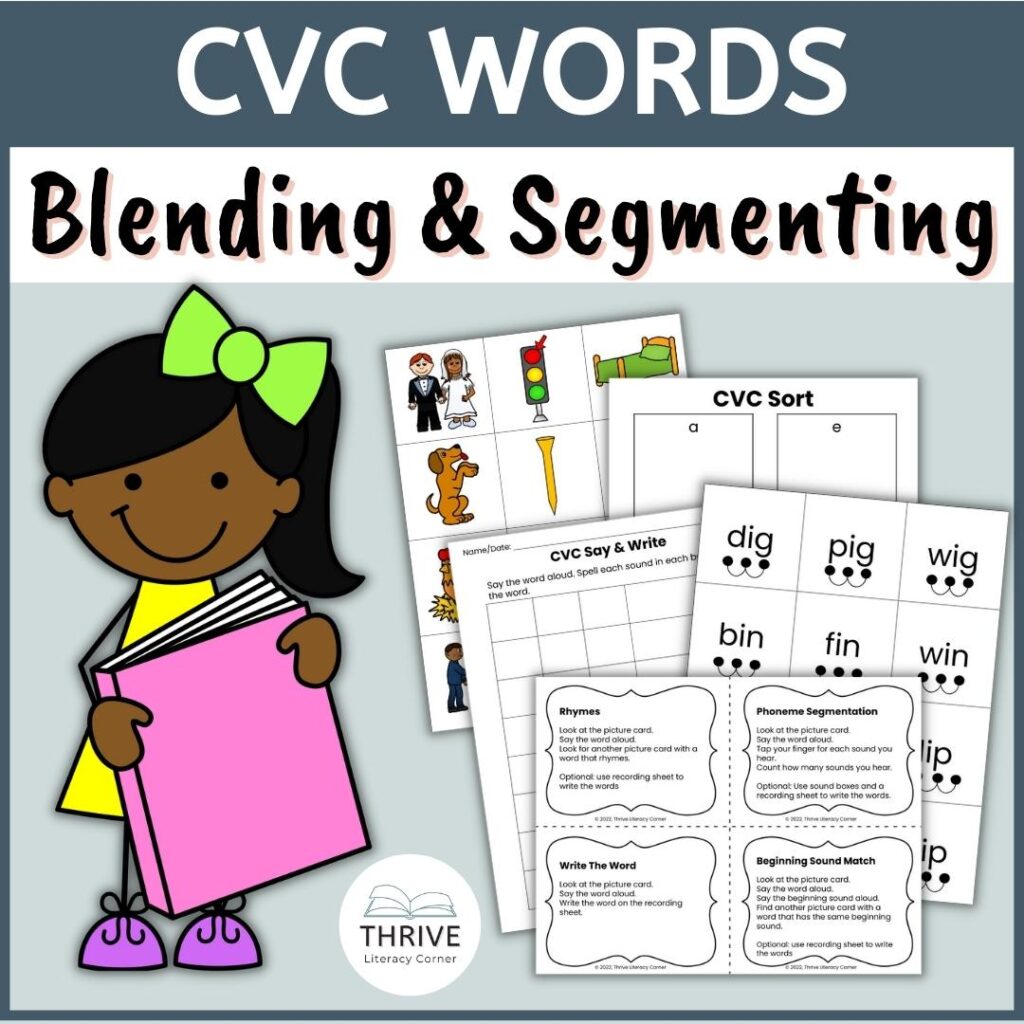
Sound Isolation
Sound isolation is one of the first activities you want to do when teaching CVC words. Have students circle and say the beginning, middle, or final sound. Have students fill in a blank sound in a word, such as the popular Word Ladders worksheets. You can search for beginning, middle, or final sound CVC word worksheets and games on Teachers Pay Teachers for more ideas.

Word sorts
Word sorts are a great way to practice CVC words. You can have students sort picture or word cards by the beginning, middle, or ending sound or you can have students sort words that rhyme. You can also play a memory game with different CVC words.
The worksheet pictured below is an example of a sound isolation and sorting activity. This one is part of my Halloween Phonemic Awareness set and does not focus on the CVC pattern, but I wanted to give you a visual example of a worksheet you could use for this skill.

Build a word
You can use magnetic letters, letter cards, or letter tiles to create words. Give students letters and have them build their own words and read them aloud. Or say the word and ask students to build it. Or give students a picture and have them build the word.
Students can also make different CVC words by changing one letter in a CVC word, then building or writing that new word. For example, students have the word cap. Ask them to change the first sound to /t/. They should now have tap.

Rhyming words
Ask students to make words that rhyme. Give them a word to work with. You can challenge them to create as many words as they can. For example, if you have a word like cap they could change the beginning sound/letter to make up the word map. This could be auditory, with pictures, or with letters.
Elkonin Boxes
If you’re a long-time reader then you know how much I love Elkonin boxes! They’re just so versatile and effective for teaching blending and segmenting.
Grab or create an Elkonin boxes template (I have one in my freebies library), and students can use manipulatives or write in the boxes as they work with words.
You can say the word for students to build or provide pictures for them. This would make a great independent activity once they know how to do this and have had sufficient practice.

Segmenting
As I said before, segmenting is very important. Students can practice segmenting using Elkonin boxes, letter cards, tapping out the sounds, or any activity that has them break up the word into its 3 sounds.
To do this, you want to say the word aloud. Ask students to segment the word by tapping out the sounds. They should tap and say each sound. Ask them how many sounds are in the word. You can use manipulatives to do this, such as bingo chips or counting cubes to represent each sound. I typically model this on the board using pictures and magnets.
Read this post all about how to teach phoneme segmentation for more ideas and tips.

Blending
Students can practice blending different sounds with letter cards, tiles, or magnetic letters. I like to use phonogram drills for this.
To do this, you lay out 3 letter cards to create a CVC word. For this example, let’s use b, a, and t. Ask students to blend the 3 sounds together. They should say bat.
Then place another consonant card over the b, such as h. Ask students to blend and say the new word. They should say hat. Continue swapping the sounds, moving through all 3 to practice initial, medial, and final sounds.
This could be done with Elkonin boxes as well. Students can use letter cards or write in the boxes. For struggling readers, it helps to have the visual of the 3 boxes representing the 3 sounds.

Blending cards are also a great activity. Blending cards are flashcards that have words with dots below each sound and a line guide to help students blend the sounds together. See the image below for an example of CVC blending cards.
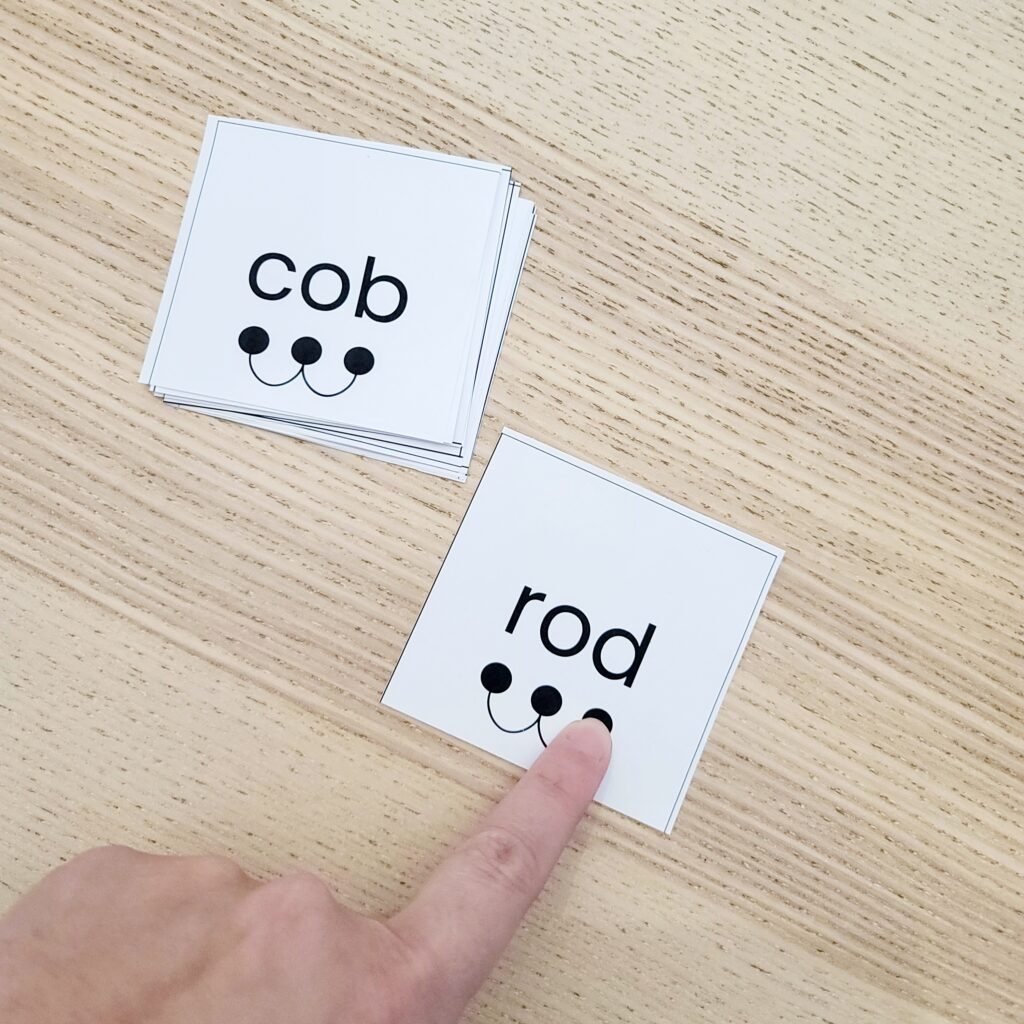
Fluency grids are also a good activity to develop more automaticity once students are comfortable with blending. These CVC Fluency Grids focuses on CVC words to help students read them faster.

Phoneme Grapheme Mapping
This is very similar to Elkonin boxes but combines it with writing.
You say a word and show a picture of it. Students segment the word using manipulatives or by tapping out the sounds. Then students write the letters in sound boxes.
I have a few free word mapping worksheet templates in my freebies library.
Below is an orthographic mapping template you can purchase from my TPT shop for words with 2 to 5 sounds. It’s a multisensory version with more steps than my freebie template.
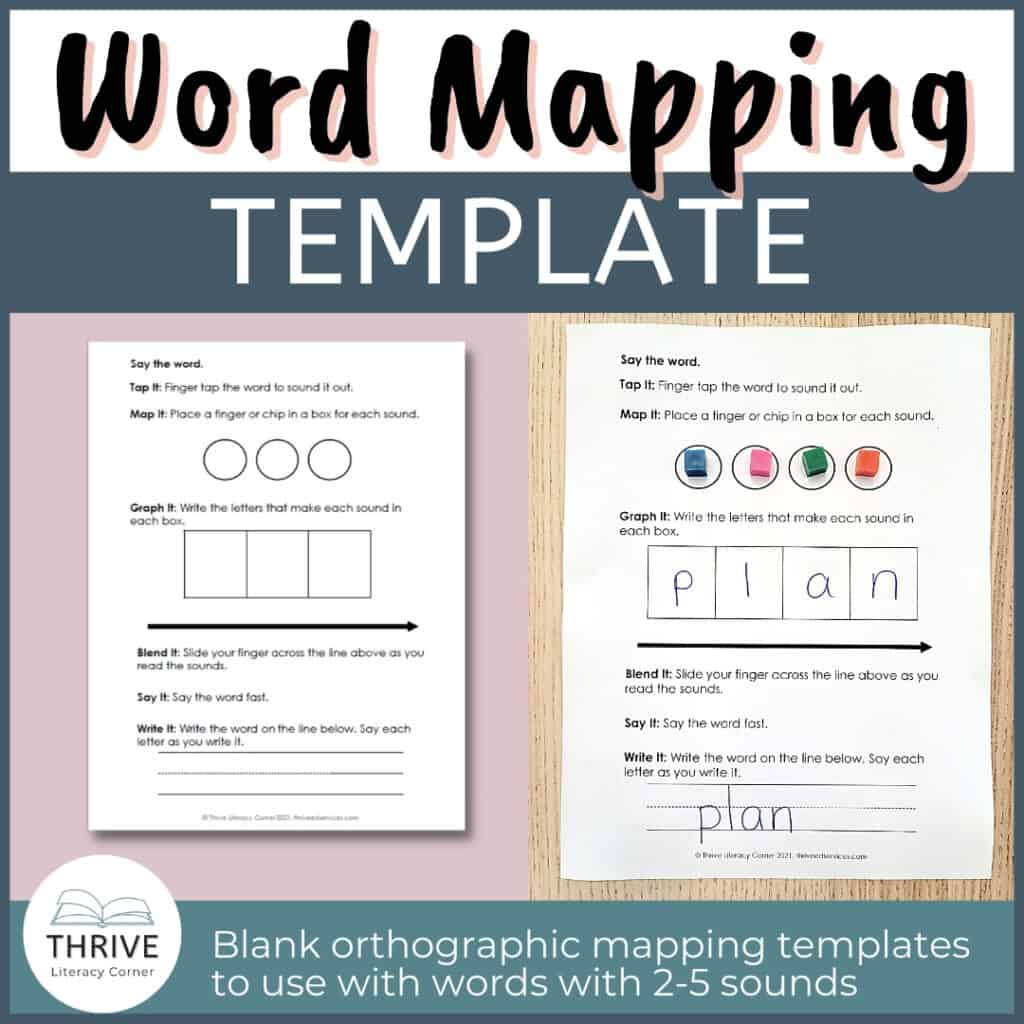
Writing
Dictation, worksheets, and whiteboards are some ways to get students to write CVC words. Start with guided activities using whiteboards and worksheets. Move on to more independent activities such as dictation once students have had some practice. Dictation is the hardest because they have to recognize the sounds in the word you said, segment them mentally, then produce them in writing.
In the activity pictured below, students use picture cards to segment, spell, and write CVC words. This is from my CVC Words With Pictures – Cards for Segmenting and Blending activity.

Games
Games can be a fun way to practice CVC words. Teachers Pay Teachers has so many free games. But you can turn any game into a CVC review game by adding flashcards and a targeted task.
One game I play with CVC words is Connect 4. On every turn, students pick up a flashcard, read the CVC word, segment it by finger tapping, then write it on a whiteboard. Then they add their chip to complete their turn.
Conclusion
I hope that this article has given you a better understanding of how to teach CVC words. It is important for children to learn as early on in their education process as possible so they can build foundational skills and knowledge about the English language. Be sure to check out all the resources listed above (especially my super helpful list of CVC words) if you are looking for more information or inspiration when teaching the consonant vowel consonant pattern.
Want to remember this? Save How to Teach CVC Words + FREE CVC Word List! to your favorite Pinterest board!

If you’re looking for more tips on teaching reading to struggling learners, check out these other posts:
- How To Structure Your Literacy Block
- Reading Assessments You Should Be Using
- What is the Science of Reading?
- Teaching High Frequency Words Using the Heart Word Method
- Phonemic Awareness Strategies & Activities For Struggling Learners
- The 6 Syllable Types
- Why You Should Switch To A Sound Wall
- Reading Strategies for Struggling Readers – Elkonin Boxes
- Activites That Improve Reading Fluency



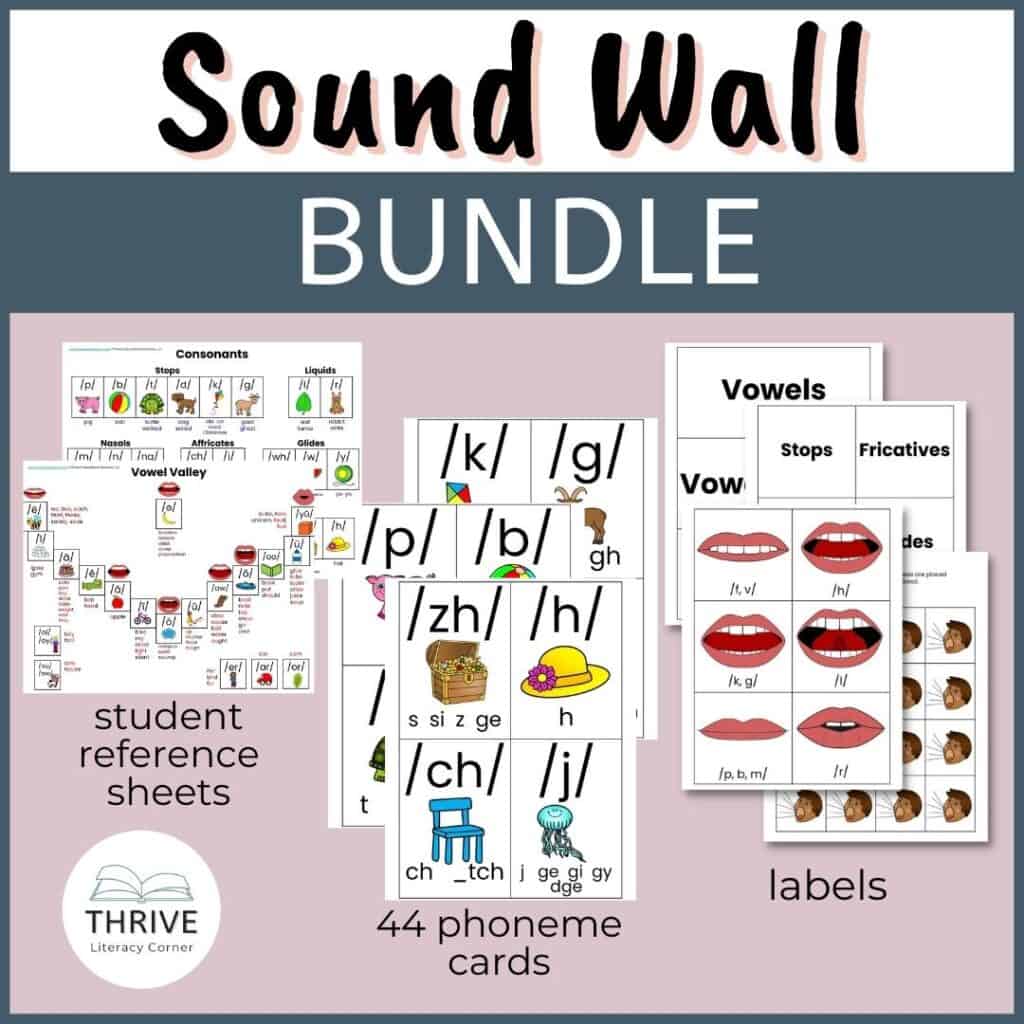
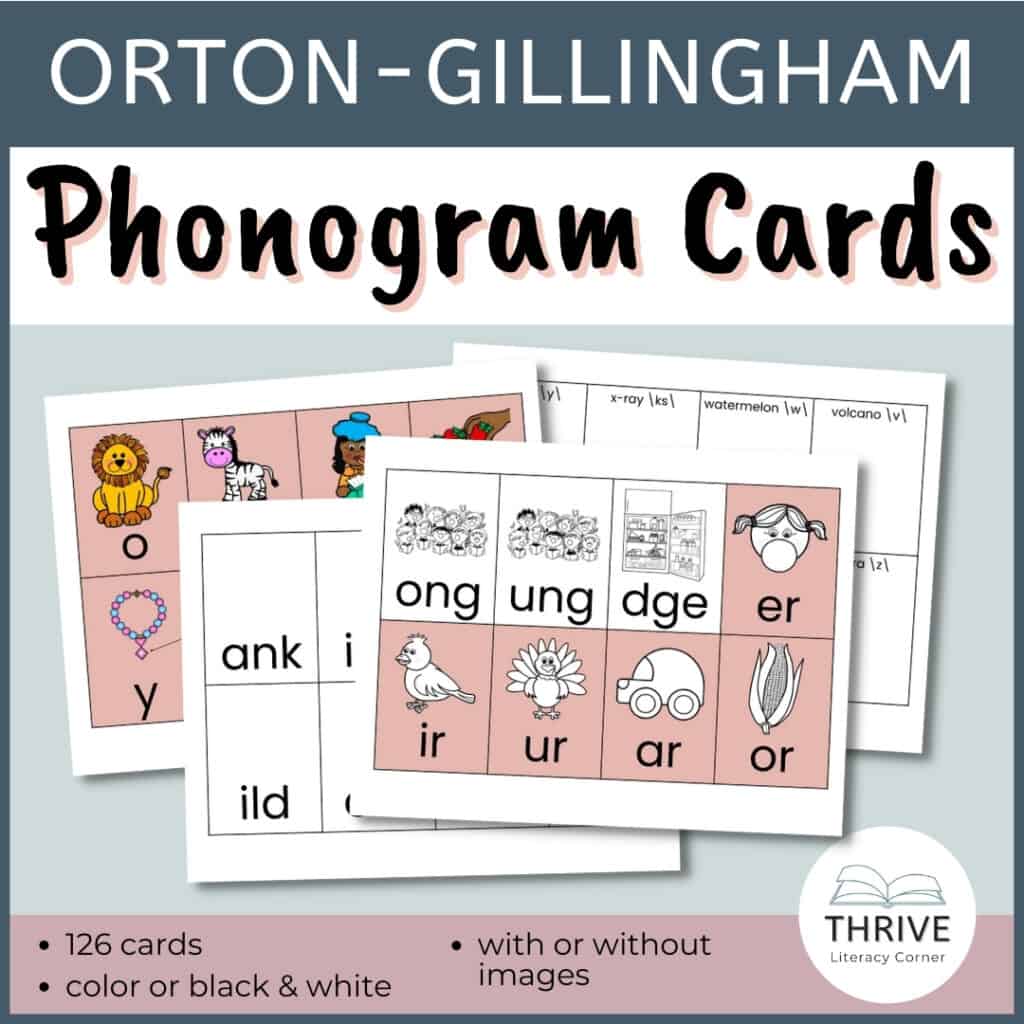
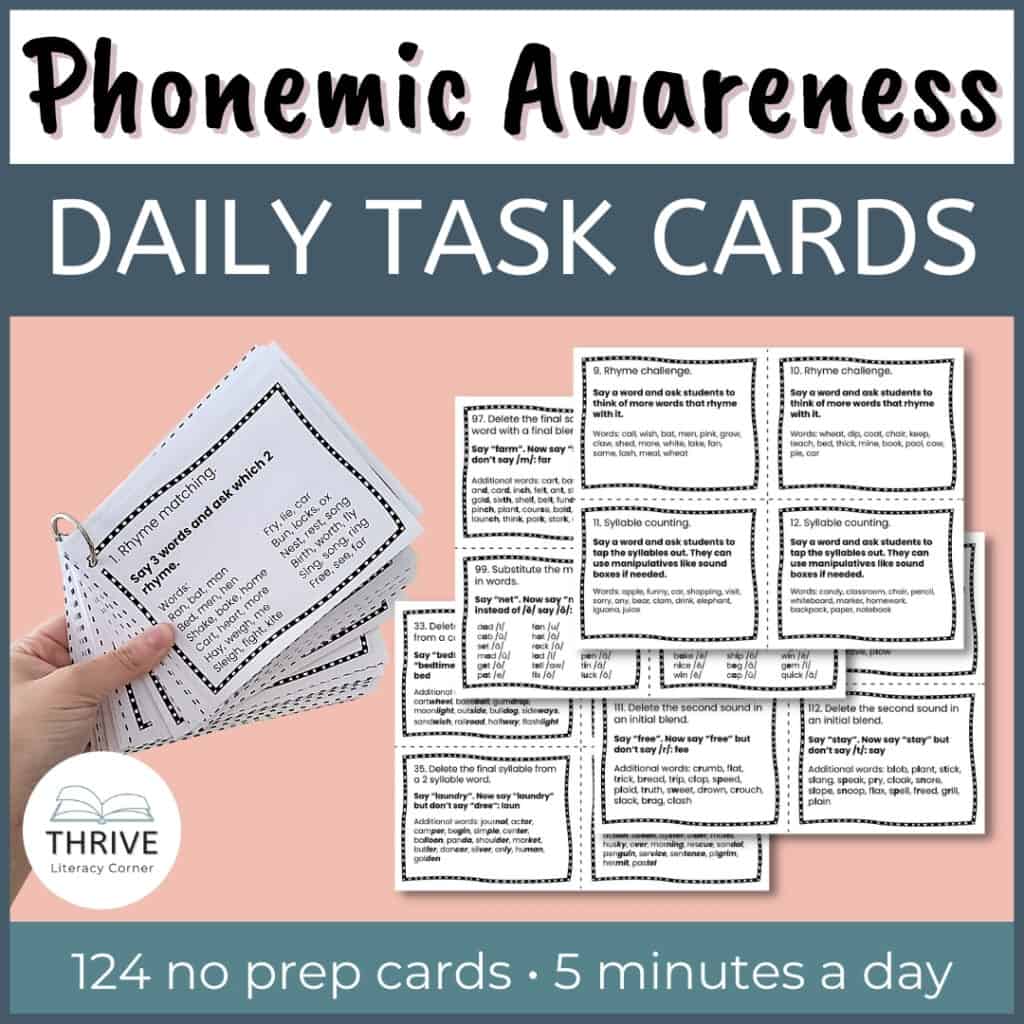
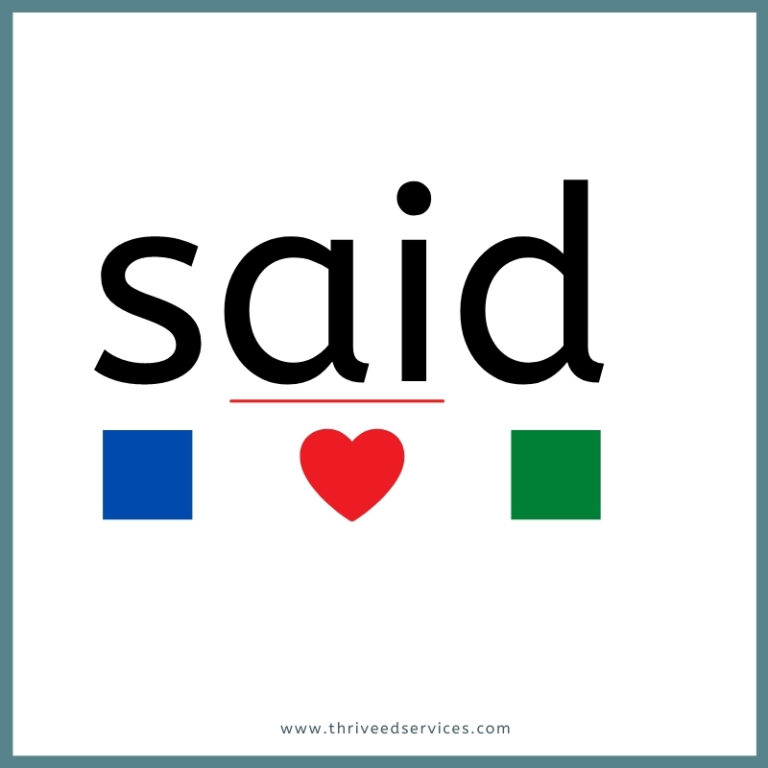
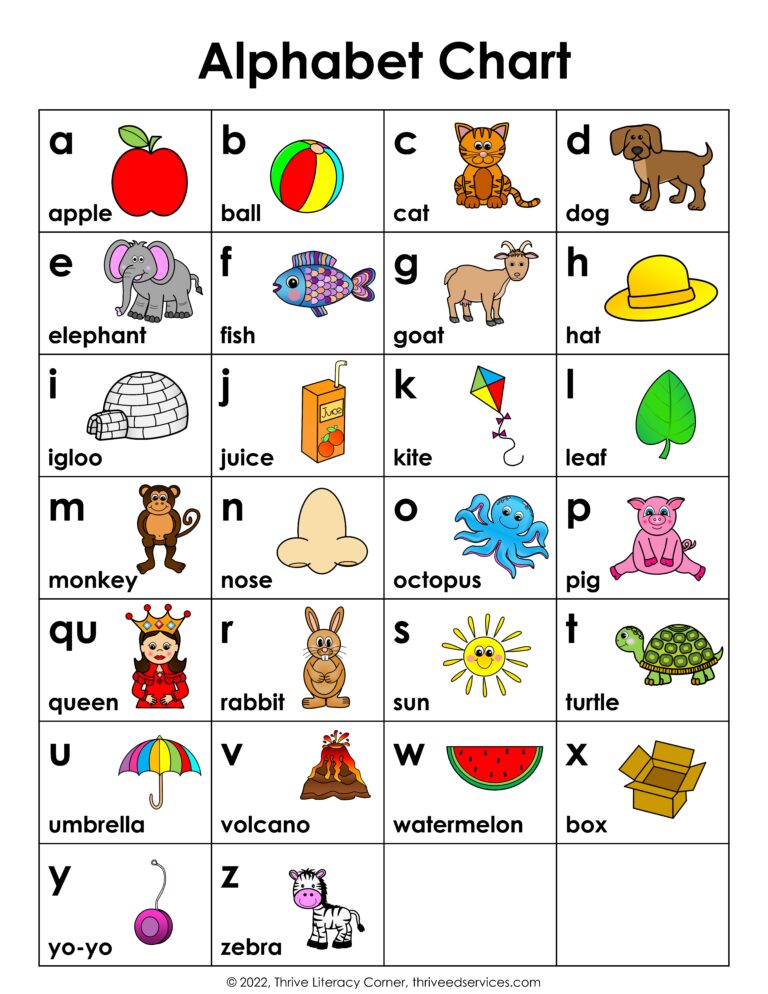
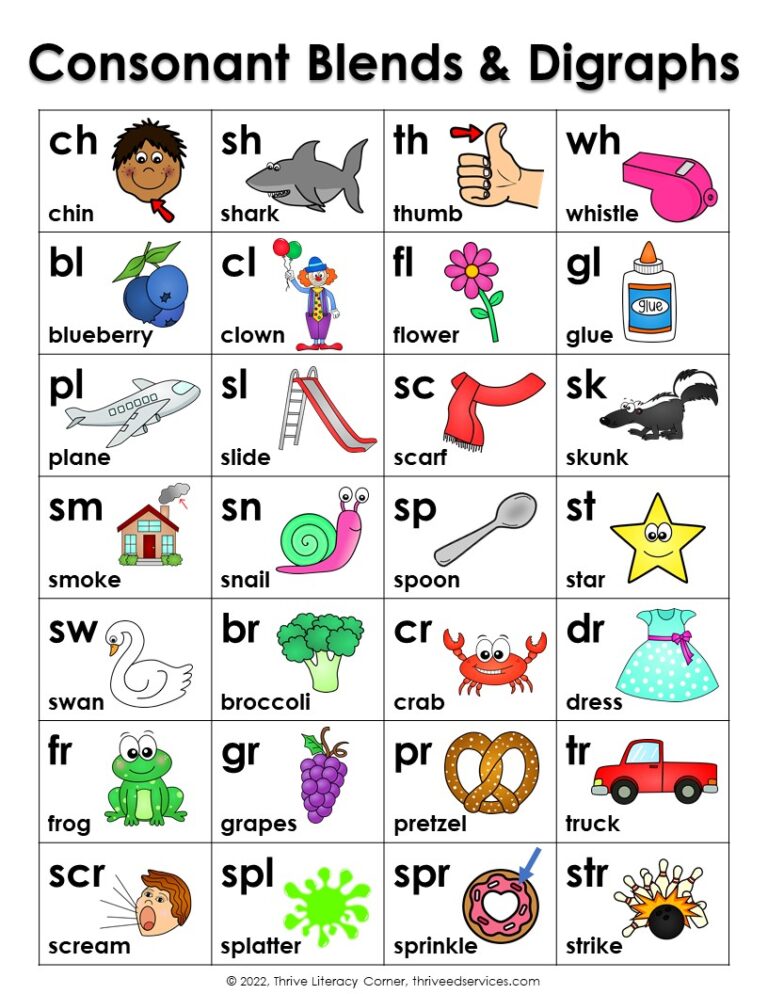
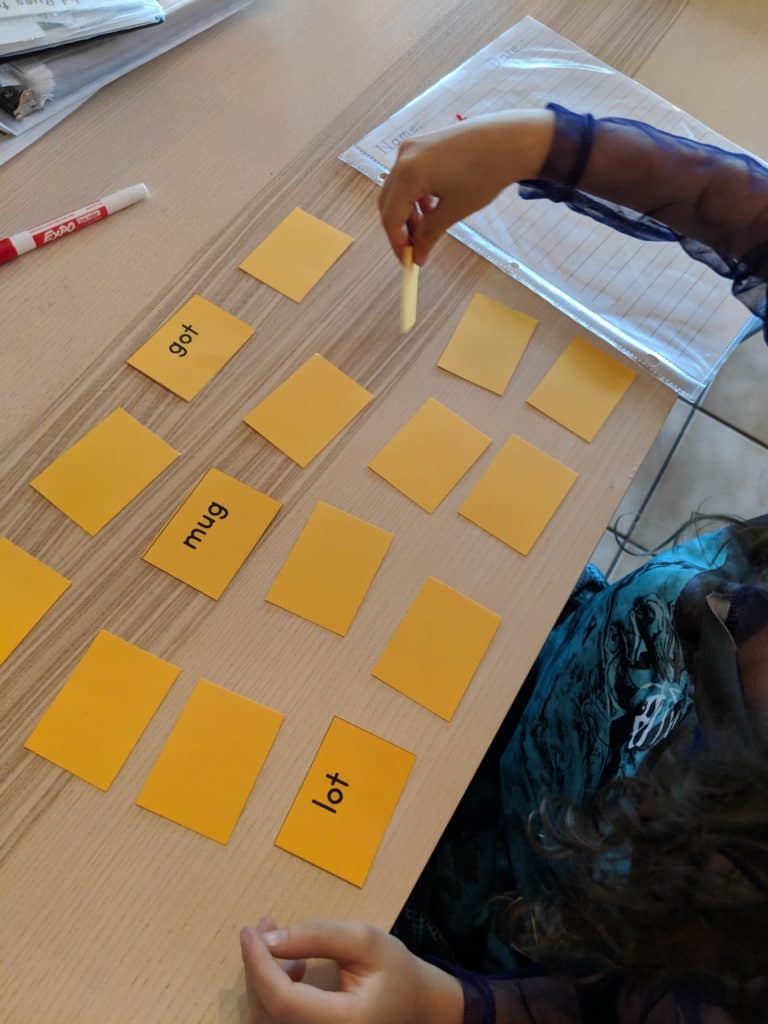
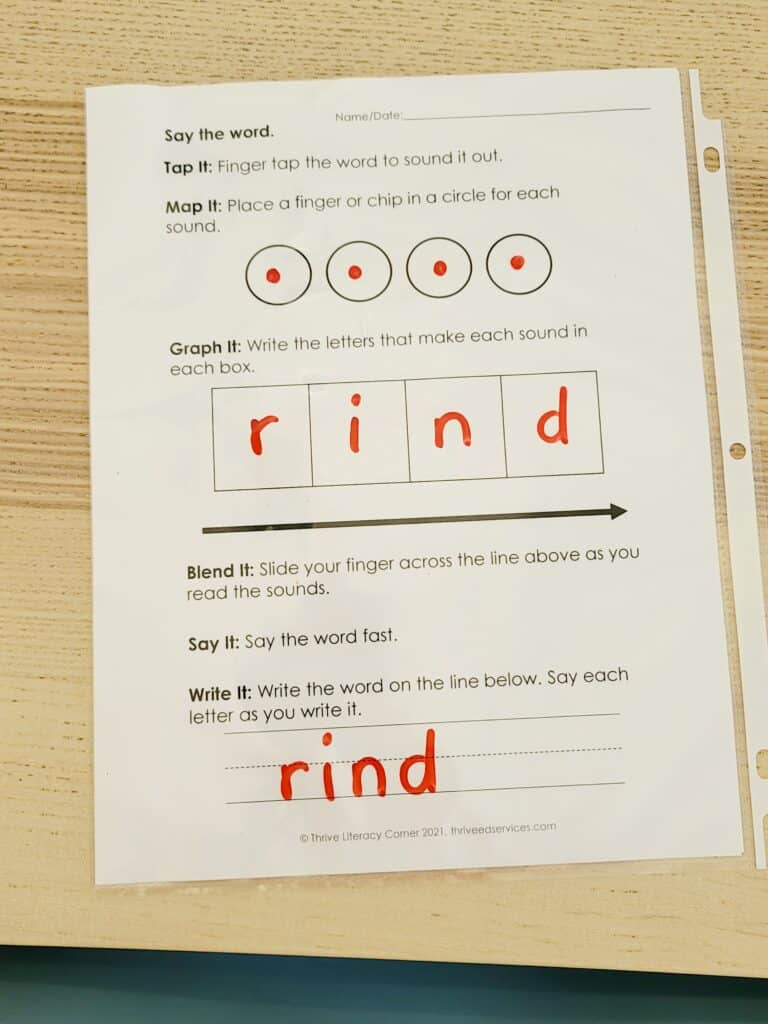
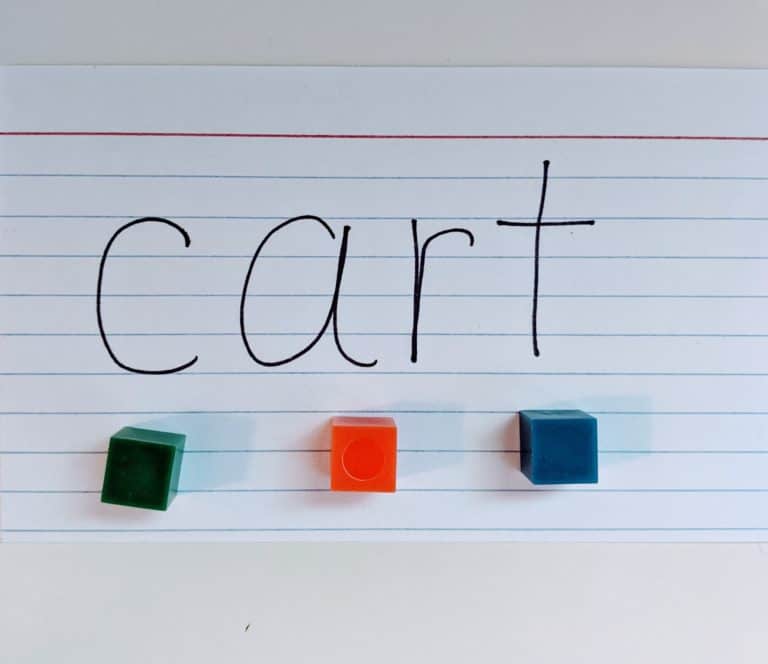
Hi, I’m a grandmother, Thankyou so very much for all this great information and help…
You’re welcome! 🙂